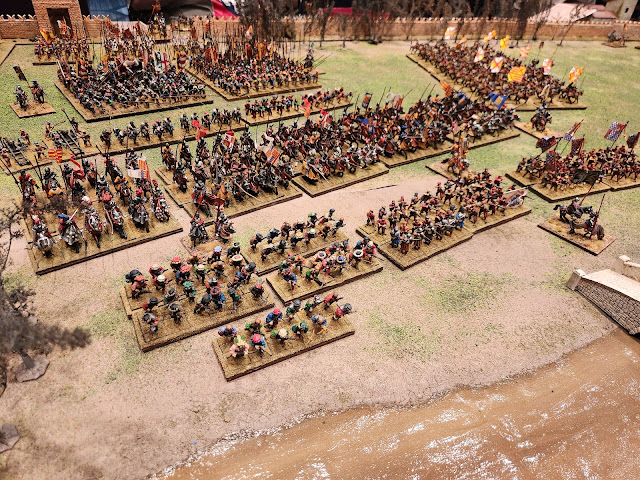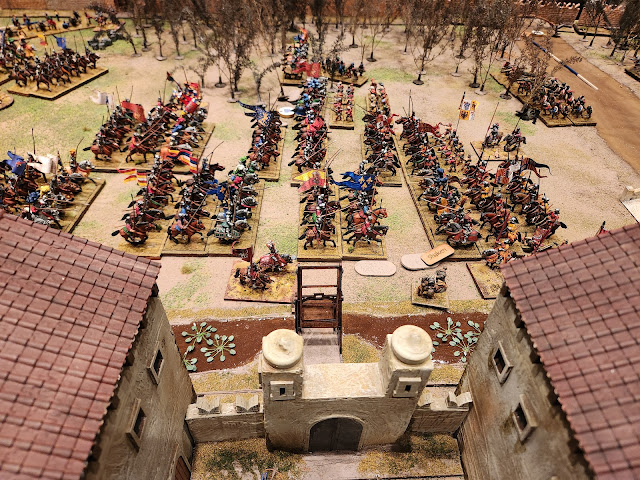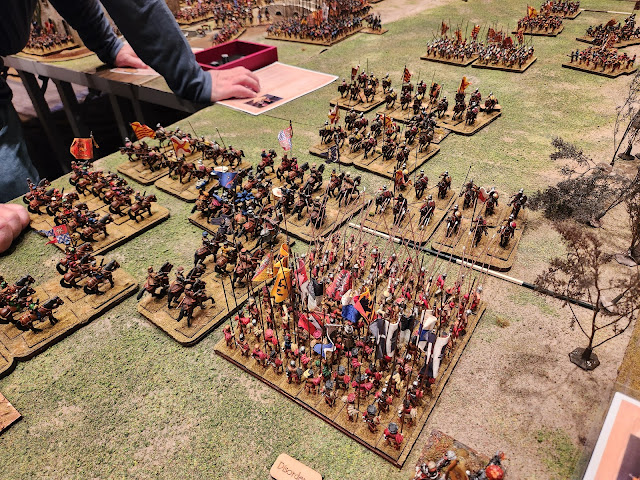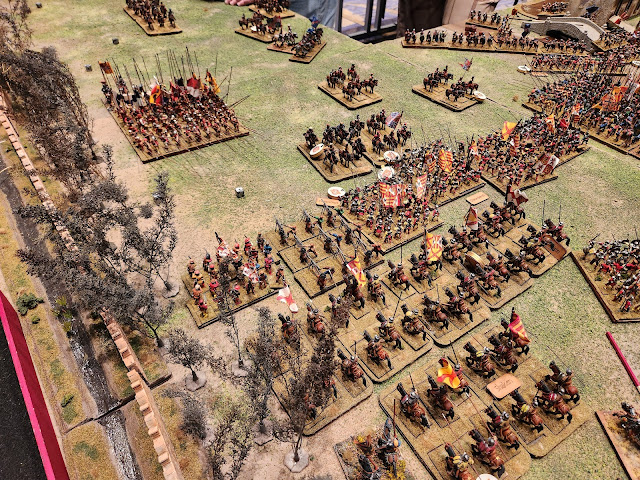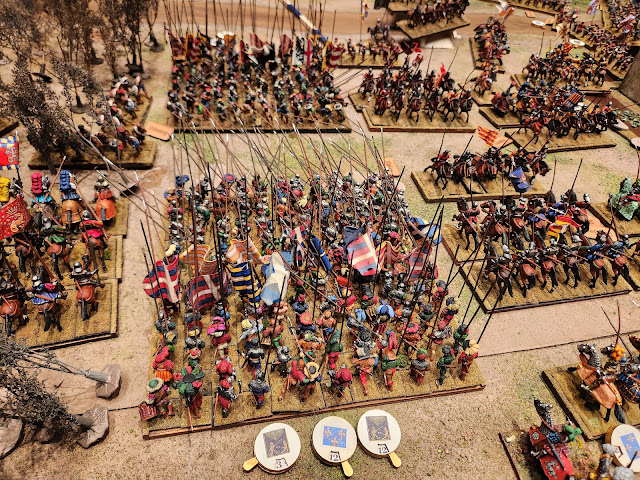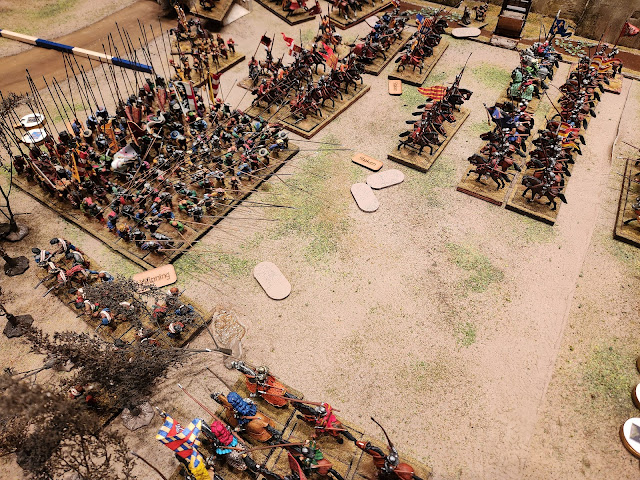This past weekend was Historicon! After several years of not attending, I dropped by last year to check out the Lancaster Convention Center and decided that I'd try to attend the next year's convention.
After renting a place a few blocks away I drove up from Maryland, having signed up for four games and ready to play.
As you can see, Martyn put in an incredible amount of work, with thousands of miniatures and two play areas. After hearing about the project when Martyn was a guest on the
Yarkshire Gamer Podcast, I knew it was going to be the first game I would up for.
I really can't express how awesome it was to see multiple 144-strong pike blocks.
Those are metal pikes too, so these units are literal hazards for the unwary gamer!
The main battle was between French and Imperial forces north of what I believe is the Castle Mirabello.
In addition to French and landsknecht pikemen, harquebusiers, and crossbowmen, the French (led by King Francis I) had plenty of cavalry.
The Imperial forces in the north end of the park also consisted of pike blocks, cavalry wedges, and ranged units.
In a quick diversion, Martyn had some wonderful additional details in his parkscape, like these geese enjoying a cold bath.
As well as these dedicated beekeepers tending to their hives.
French cavalry lead the charge against the opposing Imperial forces.
On the other side of the park, another battle broke out between the French and Imperial troops.
The third battle took place in the southern area of the park, just outside the city walls. Landsknecht pike blocks clashed with Spanish swordsmen.
With the French cavalry avoiding the woods at the park's edges, the fighting at the north end of the park was funneled into the area between the woods and castle.
My own command - the French and landsknecht infantry - watched as other French infantry infiltrated behind the council. The groups of harquebusiers marched through the freezing muck of the castle's moat.
As the French cavalry charged over the Imperial skirmishers, the ground was being churned up by the hooves of their mounts. This resulted in mud markers, which reduced the morale saves of any nearby units; absolutely deadly to the cavalry!
While the other French commanders were fighting, I was wandering around the table trying to keep abreast of the overall situation. It seemed like the French were doing a decent job of dividing the Imperial forces into two smaller groups.
My troops were rather content to sit back and watch the cavalry go at it. Just think of all of mud and horse bits that they'd have to step in just to get into the fight...
Alerted to the French's underhanded tactics of going around the castle, the Imperials rerouted some of their own ranged units to halt the sneak attack.
However, disaster struck when the Imperial troops routed their French opponents by the city's walls. Freed from combat, the Imperial commander double-timed his troops to attack the French rear lines. Multiple cannons were captured before the French could react.
From what I could tell (again, doing circuits around the tables), the Imperial forces had pulled backed behind reinforcements that made their way through a breach in the park walls.
The French forces on that side of the table were now the ones on the receiving end of a flank attack!
At Martyn's urging, James (an Imperial commander) and I maneuvered our landsknecht pike blocks into combat.
German peasants on both sides stabbed at each other, the units forced into a push of pike.
Such a titanic clash couldn't last for long! With the amount of dice these units threw down (and some very nasty modifiers, like re-rolls for failed attacks and lowered morale saves from all the mud and bloody bits of horse and French nobility), both units quickly accrued a deadly amount of hits.
Unfortunately, it was my unit that broke first!
As the game hit its time limit I wasn't able to get a full tally of the end results, as I had to immediately head to my next game. I'm fairly certain the French got the worst end of the stick, having lost an entire command and been flanked on the other side of the battlefield. Still, what a game!
This would be a fantastic all-day event, and I'm impressed that Martyn could not only get results in the four hours the game was scheduled for, but managed to do so five times over the courts of three days.
I also appreciated chatting with him during and after the game. From his recommendations, I've got some books to pick up to learn more about the battle.
Martyn deservedly won the Historicon Best of Show award. While I'm still dazzled by the setup through the pictures I took, it was still something you had to see in person; a real triumph of the Big Miniatures Battle in a market flooded with skirmish games.






































